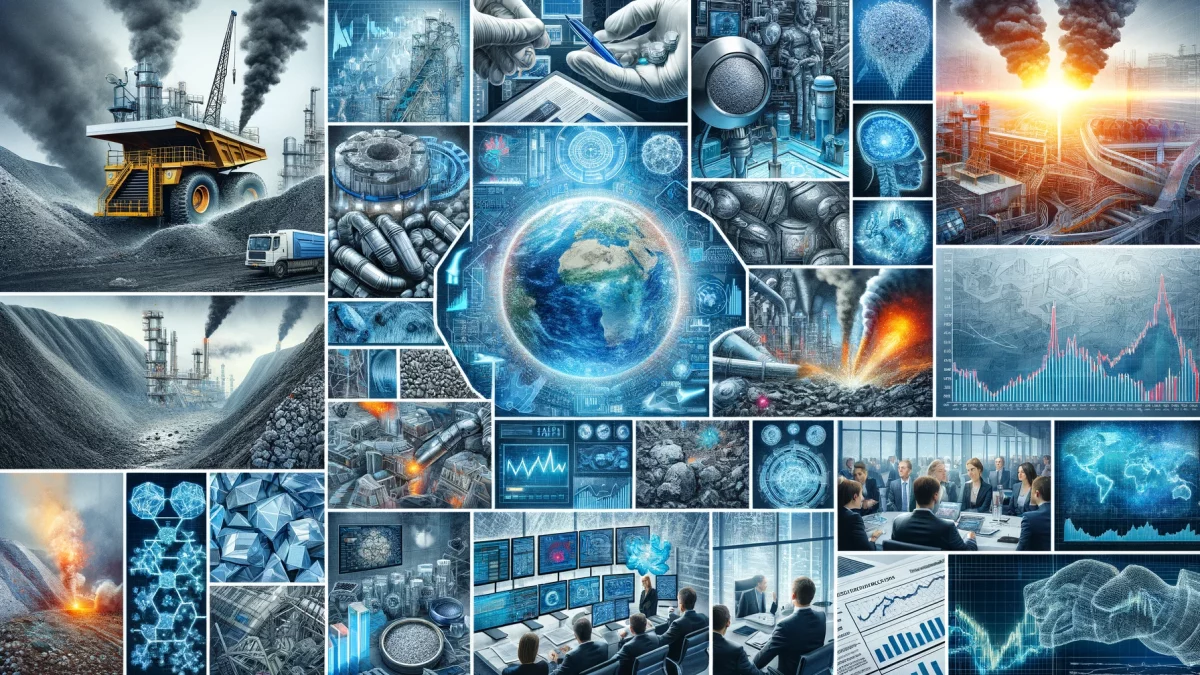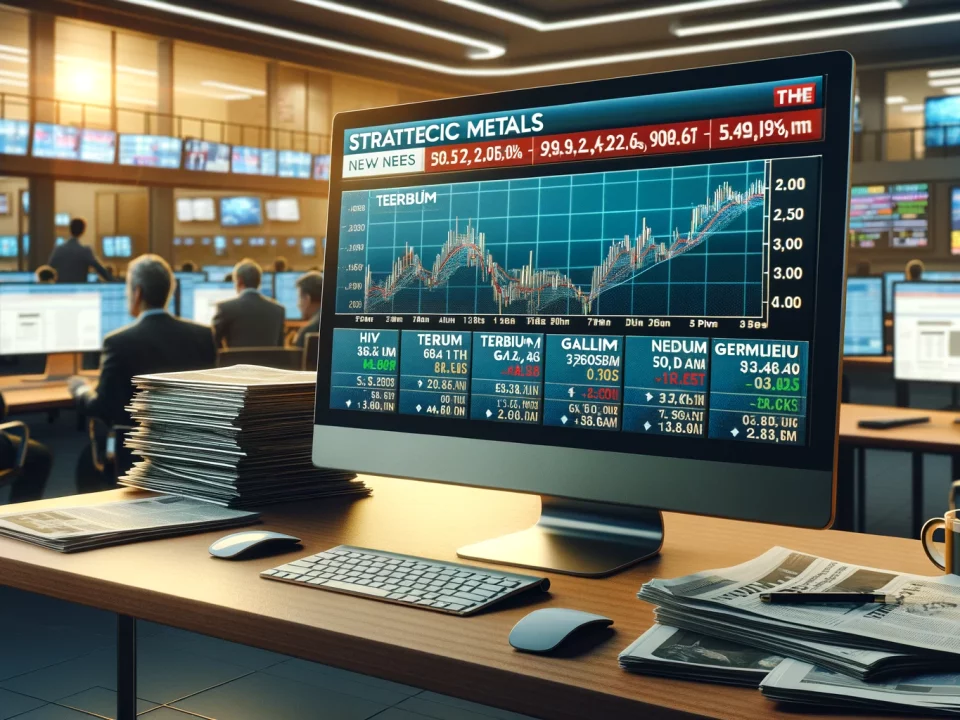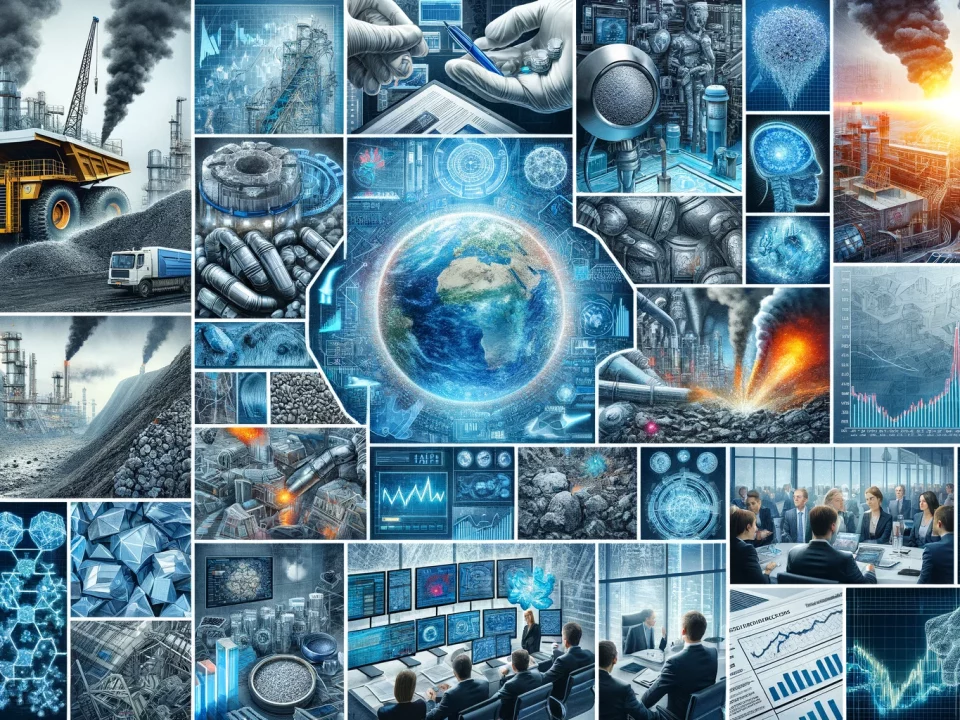
Weekly News Review July 8 – July 14 2024
July 14, 2024
Weekly News Review July 22 – July 28 2024
July 28, 2024Welcome to our weekly news review.
US SENATORS INTRODUCE BILL TARGETING CHINA’S DOMINANCE IN STRATEGIC METALS:
Diplomatic efforts, more investments, and the assessment of possible duties.
A bipartisan group of senators has introduced a bill to bolster the supply of critical minerals while addressing China’s dominance in the sector. The 44-page-long legislation tabled by the group led by Republican Marco Rubio and Democrat Mark Werner is the successor of a letter the two senators wrote to the Biden administration in November last year (we reported). Rubio and Werner then called for action to safeguard critical mineral supply chains. The now-introduced Global Strategy for Securing Critical Minerals Act of 2024 sets out an increased focus on diplomacy to secure supply from abroad and support U.S. companies investing in foreign projects.
The bill also sets out the creation of a fund to assist public sector investments in critical mineral projects and train a specialized workforce. In addition, the bill also lays out an assessment of the imposition of import duties on electromagnets, battery cells, electric storage batteries, and photovoltaic cells imported from China and “certain” other countries. These countries exclude allies, countries with a free trade agreement, India, and major non-NATO allies. U.S. President Joe Biden imposed import tariffs on Chinese imports in May, including on the items listed in the new bill. The assessment likely aims to close loopholes when Chinese products are shipped through a third country.
Senator Warner emphasized that the bill would serve as a “roadmap for the U.S. to counter China’s dominance in the sector.”
HOW DANGEROUS ARE EARTHQUAKES FOR THE SUPPLY OF RAW MATERIALS? US GEOLOGICAL SURVEY PRESENTS STUDY ON COPPER AND RHENIUM:
The vulnerability and regional concentration of supply chains for critical minerals have become a matter of public awareness since the coronavirus pandemic and the Russian attack on Ukraine. However, not only do global crises and geopolitical factors jeopardize the supply of raw materials, but natural disasters are also a risk factor. The U.S. Geological Survey (USGS) has presented the first global study on the potential impact of earthquakes on supply chains. Initially applied to copper and rhenium metals, the new method could be extended to other mineral commodities, according to the USGS.
The report concludes that many of the largest copper mines and processing plants are located in highly earthquake-prone regions in South America, East Asia, and the Pacific, which could impact the entire supply chain. Rhenium is exposed to a similar risk as a by-product in some copper mines. However, the research team points out that the results only represent the lower limit of the overall risk. On the one hand, these are average values on an annual basis, which a single major earthquake could easily exceed. Secondly, there needed to be more publicly available data, particularly for China.
The complete study can be accessed here as a PDF: https://pubs.usgs.gov/of/2024/1028/ofr20241028.PDF
E.U.:INDUSTRY REPRESENTATIVES CALL FOR EXPLORATION FUND FOR EUROPE’S MINING INDUSTRY:
Europe is to be partially self-sufficient in critical raw materials, but this requires extensive investment.
With the Critical Raw Materials Act (CRMA), the E.U. anchored securing supplies of critical raw materials in a separate law this year. Among other things, target quotas were introduced for the domestic extraction of a whole range of resources, which will be achieved by 2030. The CRMA did not provide any dedicated funding for mining. Against this backdrop, Bernd Schäfer, CEO of EIT Raw Materials, a consortium that networks industry and research, calls for a dedicated fund to promote the extraction of minerals with high criticality for the European economy. News agency Reuters quoted him saying that this fund must be generously funded and that billions are at stake.
“This should not be just a couple of million (euros); it should be a billion, a big number.”
Bernd Schäfer, CEO of EIT Raw Materials
The construction of a new mine is expensive; the development phase alone before the start of raw material extraction can cost between one million and one billion U.S. dollars, depending on the deposit, according to a study by the University of Arizona, among others. In addition, the industry, like many others, is also affected by a shortage of skilled workers, according to studies.
CANADA INVESTS IN CRITICAL MINERALS INFRASTRUCTURE:
One hundred forty-two million U.S. dollars for the expansion of highways.
Canada and the government of British Columbia announced this week that they will invest the equivalent of 142 million U.S. dollars in infrastructure related to critical minerals in the western province. The focus is on measures to expand the highways, which are, in turn, essential for the expansion of mining activities, according to a press release from the Canadian government.
The region is home to around 75 percent of Canada’s copper reserves. Defense Metals is developing a rare earth project that could become an essential building block for Canada’s Critical Minerals Strategy. It aims to make the country an alternative to the giant China, a raw materials giant. To this end, approval procedures for new mines will be accelerated, among other things.
In addition to numerous jobs, British Columbia could benefit from extensive further investment and additional tax revenue. There would also be economic prospects for the local indigenous communities. According to the press release, every new job in a mine in British Columbia is estimated to create two more companies along the value chain.
EUROPEAN COURT OF AUDITORS: EU HYDROGEN TARGETS UNREALISTIC.
Auditors call for a revision of the strategy and better access to funding.
Green hydrogen is crucial to the European Union’s climate protection goals; the environmentally friendly energy source is intended to replace fossil fuels, particularly in heavy industry and transportation. According to E.U. plans, ten million tons of renewable hydrogen in each case are to be produced locally and imported by 2030. However, according to a new report by the European Court of Auditors, this ambitious target is unlikely to be achieved by the bloc, which monitors the E.U.’s finances and can influence policy.
Although the auditors recognize that the proper steps have been taken, there are still challenges, especially regarding public and private financing. As the exact E.U. definition of renewable hydrogen has been unclear for too long, partly due to the potential role of nuclear power, many investment decisions have been postponed. Project developers are also hesitant because supply depends on demand and vice versa. Meanwhile, E.U. funding – estimated by the auditors at 18.8 billion euros between 2021 and 2027 – is scattered across several programs, making it difficult for companies to access.
Targets “Driven by Political Will”
The report concludes that the E.U. hydrogen targets were not based on a “robust analysis” but were driven by political will. Therefore, the auditors are calling for a revision. This should create precise market incentives and better prioritize “scarce E.U. funding” and parts of the value chain.
The European Court of Auditors’ report aligns with previous analyses that have addressed various challenges on the path to the hydrogen economy (not only in Europe). Management consultancy Roland Berger, for example, pointed out the urgent need to expand the number of electrolyzers used to produce hydrogen. This also requires securing the supply chains for the necessary raw materials, such as iridium, whose highly regionally concentrated production cannot be ramped up at will. Last fall, the National Hydrogen Council, an advisory body appointed by the German government, even warned of “drastic effects” on the hydrogen market given an impending iridium shortage.
In its latest report, the European Court of Auditors also cites supply chain disruptions and dependence on certain raw materials as challenges.
MICROSOFT RECOGNISES INCREASING DEMAND FOR RARE EARTHS AND THEIR RECYCLING:
Tech Company invests in technology to recover critical raw materials from hard drives.
Microsoft wants to avoid waste generation in its production processes by 2030, and the development of new recycling technologies is correspondingly significant. The company’s Climate Innovation Fund initiative is now investing in one such technology for disused hard drives with an equity investment in Cyclic Materials. In a press release, the Kingston-based business points out that gold, silver, and other metals were previously almost exclusively recovered from the discarded storage media.
With the new system, it is also possible to recycle rare earths from some of the hard disks. These would then be extracted using the company’s hydrometallurgical technology. The other components would be handed over to the classic recycling process. Cyclic Materials already has a supply contract for recycled rare earths with the Belgian chemical company Solvay (we reported).
“As demand for rare earth elements continues to grow in importance, we’re excited to support the creation of a sustainable supply of these materials with this investment,” comments Brandon Middaugh, Senior Director of the Microsoft Climate Innovation Fund. In Europe, there is also HyProMag, a company dedicated to building a circular economy for rare earths from hard disks and wind turbines.
German company Heraeus also recently opened Europe’s most extensive recycling plant for rare earth magnets. Only a fraction of these magnets have been recovered, but the E.U.’s Critical Raw Materials Act will introduce fixed quotas to recover many critical raw materials by 2030.
US AWARDS $1.7 BILLION TO LEGACY AUTOMAKERS TO CONVERT TO ELECTRIC VEHICLES:
Shuttered and at-risk facilities will be modernized and transformed.
The United States Government has announced it will grant carmakers $1.7 billion to convert closed or at-risk production and assembly facilities into electric vehicle and supply chain production facilities. In detail, eleven plants across eight states—Michigan, Ohio, Pennsylvania, Georgia, Illinois, Indiana, Maryland, and Virginia—will be transformed as part of President Joe Biden’s Investing in America agenda.
The list includes Stellantis, which will receive $334 million to reopen its shuttered final assembly plant in Belvidere, Illinois, which is expected to re-employ 1,450 jobs. Also among the 11 facilities is the company Blue Bird, which will receive $80 million to modernize and convert its facility in Georgia to scale up the production of electric school buses.
Secretary of Energy Jennifer M. Granholm highlighted that foreign competitors invest heavily in electric vehicles and underscored that the grants would help keep U.S. manufacturing competitive.
Foreign competition has been at the forefront of political discourse over the last months. The U.S. and the European Union recently imposed import tariffs on Chinese-made EVs. On separate occasions, President Biden and E.U. Commission President Ursula von der Leyen spoke of Chinese goods “flooding” world markets through artificially low prices.






